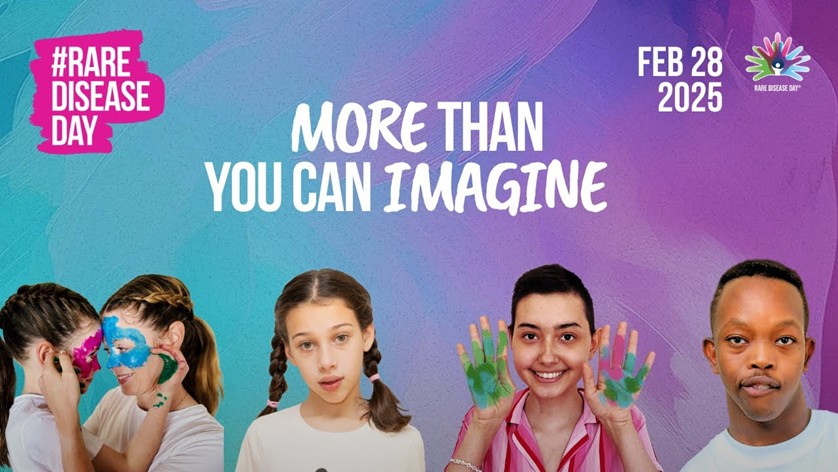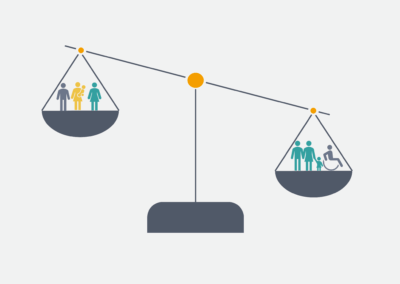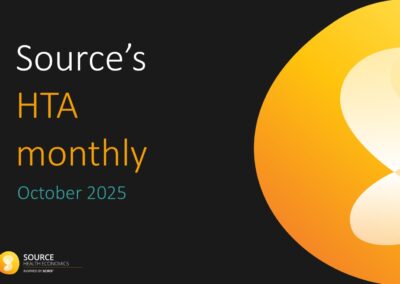Written by Aurore Sommer, Medical Writer
A disease is considered to be rare when it affects fewer than 1 in 2,000 individuals. To this day, more than 6,000 rare diseases have been identified, affecting around 300 million people globally (1). Rare diseases are often severe and debilitating, with no existing effective cures. Due to the low number of geographically dispersed patients affected by each condition, and the likely paucity of evidence around the disease course and effective treatments, patients with rare diseases are at risk of becoming unsupported by healthcare systems (2).
There is a lack of knowledge on rare diseases among patients and healthcare professionals alike, which often leads to delays in diagnosis. Symptoms of rare diseases can overlap with common illnesses, making diagnosis challenging, and symptoms may vary from one patient to another (1, 3). The main resource of information on rare diseases, Orphanet, was created in 1997 with the goal to provide high-quality information and expertise, and generate knowledge on rare diseases. Orphanet provides a range of free services and resources, available to all.
Difficulties in generating data for the treatment of rare diseases are due in part to the difficulty in recruiting enough participants to clinical trials investigating new or existing drugs (4). Small trial numbers can considerably restrict the options around trial design, and make the use of standard statistical models and replication of study models difficult. Additionally, randomised clinical trials (RCTs) may be difficult to conduct because of ethical considerations, e.g. if the rare disease is severe the use of a placebo may be unethical (5). For rare diseases where an RCT is not possible, real-world evidence (RWE) on standard of care treatment may be used as a historical control. Patient registries, which collect data to evaluate specified outcomes for people with a particular disease, can also be used in the absence of RCTs, and there are currently over 800 registries listed in or affiliated with Europe (6). Increasingly, RWE is being considered during the approval process of drugs, with the aim to expedite access to new treatments for rare diseases (7).
Initiatives like Rare Disease Day aim to increase awareness of the challenges faced by people living with rare diseases. The long-term goal of the Rare Disease Day campaign is to ensure equitable access to diagnosis, treatment, healthcare, social support, and opportunities for those affected by rare diseases (1). Further research is still needed to advance scientific knowledge, from collecting more data on each disease itself to generating evidence on new treatments. You can find out more about Rare Disease Day and how to help increase awareness of rare diseases here.
If you are interested in finding out more about our market access services, please contact the Market Access and Value Communication team at Source Health Economics, a HEOR consultancy specialising in evidence generation, health economics, and communication
References
- Rare Diseases Day 2025. Available at: https://www.rarediseaseday.org/what-is-a-rare-disease/
- National Institute for Health and Care Excellence (NICE). Available at: https://www.nice.org.uk/process/pmg46/resources/nice-strategic-principles-a-complementary-approach-to-public-health-social-care-and-rare-disease-topics-13430355949/chapter/strategic-principles-for-rare-diseases.
- LifeArc. Available at: https://www.lifearc.org/2024/6-challenges-in-rare-disease-research-and-how-we-can-overcome-them/.
- Mishra et al. Orphanet J Rare Dis. 2024;19(1):285.
- Dayer et al. Orphanet J Rare Dis. 2024;19(1):47.
- Hageman et al. Orphanet J Rare Dis. 2023;18(1):106.
- Vaghela et al. Orphanet J Rare Dis. 2024;19(1):117.




